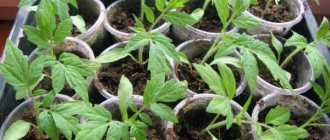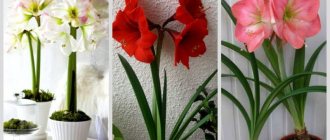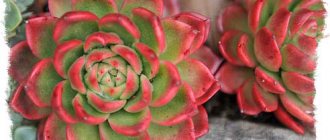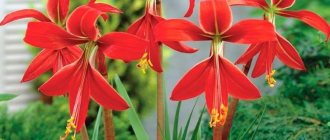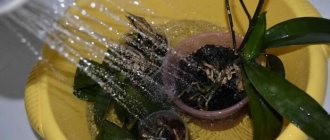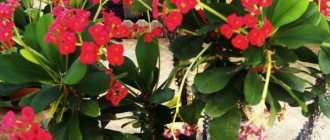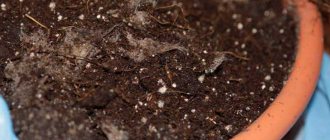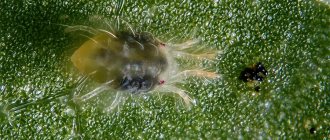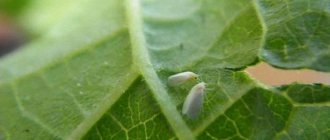How to care and conditions of detention
Temperature and location
During the period of active plant growth (approximately from April to September), the temperature is maintained at +20-+24 degrees. During the rest period, so much heat is no longer required - it is enough to maintain the air temperature within 10-15 degrees above zero.
As for lighting, bulbous plants prefer a lot of light during active development.
But it is still worth protecting leaves and flowers from direct sunlight.
Humidity and watering
From April to early September, regular moderate watering is carried out at intervals of 2-3 per week. Swampiness should not be allowed to form. And in winter, the soil is moistened every 1-1.5 weeks.
High air humidity is not suitable for bulbous plants, but overdrying should also not be allowed.
Soil and pot for growing
The container is chosen slightly larger than the onion - about 2-3 cm larger in diameter. If you choose a pot that is too large, the above-ground part will stop growing until the bulbs fill the space.
You can choose ready-made soil for indoor flowering plants. Be sure to add a drainage layer.
How to plant?
The bulb is planted in the usual way. First, a small depression is made in the ground into which the planting material is placed. There is no need to completely cover the bulb with soil, otherwise rotting will begin.
After planting, the substrate is watered moderately and the pot is placed in a warm, bright place.
Read about indoor bulbous plants: albuca spiralis, amaryllis, wallota, hemanthus, hyacinth, hippeastrum, gloriosa, drimiopsis, zephyranthes, Indian onion, calla, clivia, crinum, narcissus, nerine, oxalis, lily, scylla, freesia, eucharis. The catalog of all types is here.
Transfer
For the first three years, transplantation is carried out annually, and then as the bulb grows. The optimal period is September-October. If the bulb has no leaves, place the pot in a cool place until the first leaves appear.
When transplanting, inspect the bulb for rotting or other diseases. If necessary, cut off the affected parts and sprinkle the cut areas with crushed coal.
Reproduction
The best method of propagation at home is vegetative. During the 2-3rd year of plant growth, young bulbs grow in the pot. So they are placed in a separate container. Large specimens bloom already in the first year after planting, smaller ones – in 2-3.
What to feed?
When feeding bulbous plants, it is better to underfeed them than to overfeed them. Plants most need potassium, phosphorus and nitrogen. You can choose complex fertilizers containing these three elements.
Spring forcing
Large, heavy bulbs are selected for forcing. Before placing in the ground, the scales are removed from the planting material. The procedure can be performed at any time of the year, it all depends on when you need to get flowering (the whole process takes up to 4-5 months). The main thing is to provide plenty of lighting. Most often, forcing is carried out in such a way that the plant blooms during the March holidays.
In the section “Indoor bulbous flowers” you can find the specifics of care and cultivation for each species.
Not every gardener has bulbous plants in his collection due to the peculiarities of caring for them. But it’s worth trying to plant a variety once, then subsequent questions and difficulties will not arise.
Follow the planting dates for bulbous plants.
Flowering bulbs can be planned for certain dates. This way you can give your loved ones, for example, tulips in a pot, for a specific holiday. Approximately the timing calculation will look like this:
- New Year - planting at the end of August-September;
- March 8 – plant bulbs in late October-November;
- Easter - we start forcing in October-November.
If timing is not important and you are just growing flowers for yourself, then start forcing from the end of August to mid-December. Don’t forget that flowers need a rest period of about 2 months after planting, so you shouldn’t wait for immediate plant growth. If you are not prepared for a long wait, then maybe it will be easier for you to buy muscari in a pot?
Bovieya
The plant also comes from South Africa and is also called “Zulu potato” or “sea cucumber”. It is valued for its elegant appearance, and although it does not bloom, it can delight you with its lush greenery all year round. Some types of boviea flower, but this fact happens so rarely that the plant is usually bred simply for its exotic greenery (see photo).
The bulbs are medium-sized - usually 5-7 cm in diameter, covered with scales. In the spring, after planting, a juicy, strong, bright green peduncle grows from the bulb, having a branched, curly shape. The length of the peduncle lashes sometimes reaches a meter, so most often the boviea is hung in a flowerpot so that the lashes hang down freely and gracefully.
Care is simple - of all the bulbous plants, boviea is perhaps the most unpretentious. It grows well in both sun and shade, however, it must be protected from direct midday sun. It does not need frequent watering - for successful growth and development of the flower, even in summer, one watering every 7-10 days is enough.
Vallota
Vallota is also known as “cirtanthus”. Its flowers, 6-8 pieces, are collected in “umbrellas”. They are red in color. The vigorous bulb produces several flower stalks between July and September. After the flower stalks have dried, they are cut short and the plant is allowed to rest. The dark green, fan-shaped leaves of the wallot, as seen in the photo, are also quite beautiful.
Wallota is an unpretentious bulbous plant, so it can be placed in any room where there is enough diffused light, which it needs.
Bulbous indoor flowers with names and photos
Bulbous plants amaze with their exquisite beauty and can delight the eye for a long time.
It is for their decorative qualities and relative ease of cultivation that many gardeners love bulbous plants. In the article we will get acquainted with the most popular types of these plants, consider both flowering and non-flowering specimens, and learn the features of their cultivation.
Consider a catalog with photographs of the most popular varieties of bulbous indoor plants.
Peculiarities
Bulbous flowers are plants whose root system is thickened and consists of one or more bulbs fused together. Moreover, the rhizome of flowers of this group may not always have this shape. Sometimes bulbous plants are distinguished by the presence of tubers, corms and even ordinary roots. The key feature of this numerous lantern of indoor flowers is the fact that almost all of them shed their foliage completely in the fall.
Only a few bulbous plants retain leaf shoots. As a rule, they do not survive in frost: if you are growing these flowers in the garden, they need to be dug out of the ground for the winter and stored until spring. As for indoor bulbous flowers, they are left in pots. The main thing is to create calm conditions for them to winter. For example, the soil practically does not need to be moistened. Knowing about the most noteworthy care recommendations, you thereby ensure that your indoor flower garden has truly vibrant specimens that are ready to warm you with their flowers for a long time.
Hippeastrum
The plant has a large, rounded bulb, reaching a diameter of 11 cm. As you understand, the flower itself grows to an impressive size, its bud is also quite large. From one to six flowers appear on one powerful peduncle.
The flowers have a funnel shape characteristic of many bulbous plants with a rather narrow tube base (see photo). The petals at the edges are slightly bent outward, which makes the plant more decorative. Hippeastrum blooms in winter or spring, very rarely in summer, never in autumn.
The plant is bordered by spectacular long leaves: bright, green, belt-shaped. In combination with bright large flowers they look very harmonious.
The plant is propagated, like most of its relatives, by daughter bulbs formed by the mother. However, seed propagation is also possible. The plant is unpretentious in care, rarely affected by pests, and rarely gets sick. However, overwatering hippeastrum with especially cold water is undesirable - in such conditions the roots of the plant can rot.
Hemanthus
Hemanthus is better known as “deer tongue”. He received this “nickname” for the unusual shape of the leaves, which is clearly visible in the photo. They appear before flowering begins. The flowers of hemanthus are also quite attractive. Their anthers are yellow, the stamens are white. 5-6 such flowers are collected in inflorescences. In some species, flowers have other shades.
Hemanthus blooms from mid-summer to the end of September. Propagated by bulbs.
Refers to bulbous plants, in which it is round in shape and small in size (about 3 cm in some species, 5-6 cm in others).
